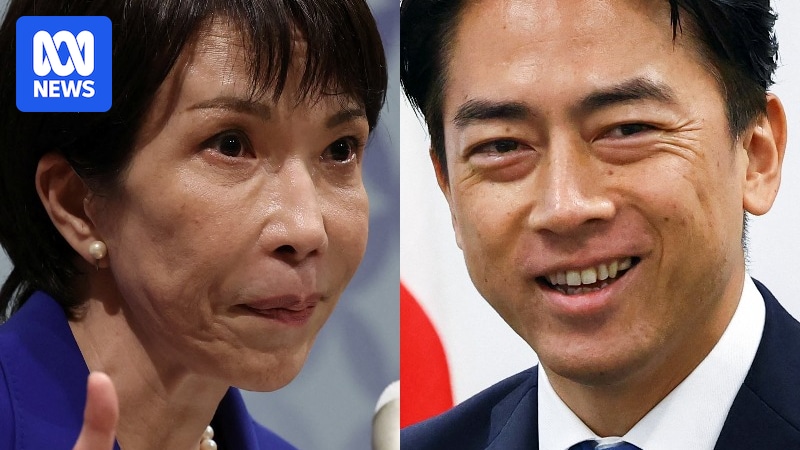
Empires do not collapse overnight — a classic phrase that is proving true in Japanese politics today. The Liberal Democratic Party (LDP), one of Japan’s most successful political parties, has been in power almost continuously since its formation in 1955. Only twice have Japanese voters let another party govern, before reverting to the LDP as their preferred, at least more stable, option.
However, a series of scandals and changing voter demands have weakened the once-powerful LDP to a minority government. Now, members of this great political party are scrambling to secure its future as Prime Minister Shigeru Ishiba steps down after only a year in the role. This has left the party searching for a new face, with frontrunner options that could not be more starkly different.
The Political Landscape and Its Challenges
In the eyes of Japan’s super-aged population, the LDP is the stable party. Since 1999, it has relied on a coalition with Komeito, a pacifist, socially conservative, Buddhist political party. This coalition had worked relatively well until recent years when instability struck Japan, leaving voters wanting more.
The first shock was inflation, which added pressure to flat wages that have dogged Japan for decades. Then, the return of United States President Donald Trump with an agenda that brought instability to the Asia-Pacific region further complicated matters. His leadership style and trade war tactics hurt Japanese manufacturers, and his America-first position put Japan’s alliance with the US in question, making many feel more exposed to China.
“The overwhelming majority of LDP supporters backed the party for its economic policies and cooperation with the US,” said politics expert Professor Naoko Taniguchi from Keio University. “Japan’s fundamental national structure has always relied on good Japan-US relations. Now, due to changes in American politics, this has become somewhat uncertain.”
As voters reeled from a cost-of-living crisis, they looked to the government for reassurance and relief. But the LDP was stuck talking about itself, a situation that is never favorable in politics. Last year, a political slush fund scandal embroiled some of the party’s biggest movers and shakers. Although the then-prime minister, Fumio Kishida, was not directly linked to the scandals, his leadership was seen as too weak and ineffective to fix the problem. Consequently, he announced his resignation, paving the way for Shigeru Ishiba, whose decision to call a snap election backfired, leaving him with a minority government.
The Contenders: Takaichi and Koizumi
On Saturday, the LDP will count votes on the party’s leadership position. The winner becomes the party president and is expected to become the Japanese prime minister, pending parliamentary approval. Among the five LDP politicians running for the top job, Chief Cabinet Secretary Yoshimasa Hayashi is a notable candidate. However, two obvious choices stand out: Sanae Takaichi and Shinjiro Koizumi.
Sanae Takaichi: The ‘Iron Lady’
Takaichi, a stalwart of the LDP, has risen through the ranks of the male-dominated conservative party to become a leading contender for the top job. She is conservative, a hawk, and a fan of Britain’s former prime minister, Margaret Thatcher, often dubbed the “Iron Lady.” If Takaichi wins, she would become Japan’s first female prime minister.
“She’s likely to appeal to the core traditional conservative base,” Professor Taniguchi said. “But while she may be popular, that view might be limited to certain people within the party. There’s also the risk factor of whether she can easily achieve cooperation with the opposition.”
Shinjiro Koizumi: The Young Contender
Alternatively, the LDP could pick Shinjiro Koizumi, a moderate who is the son of former maverick prime minister and neoliberal reformer, Junichiro Koizumi. If successful, he would become post-war Japan’s youngest ever prime minister. Comparisons could be made with former Canadian prime minister Justin Trudeau.
“Politically, he leans more to the left and is tolerant of diversity,” says Professor Taniguchi. “He is popular both among older LDP members and among more casual supporters. If the goal is a relatively calm start, I think Mr. Koizumi symbolizes that.”
Looking Ahead: The Future of Japanese Politics
It will be Takaichi’s second attempt at the top job after narrowly missing out last year, when members of the party rallied behind Shigeru Ishiba in a leadership runoff. Her political views proved too conservative for the conservative party, it seems. But in the age of uncertainty, she will be seen as the more experienced option.
Koizumi has long been seen as too “green” to lead the nation. Although, as agriculture minister, voters started to see him in a different light due to his response to the country’s rice shortage. A third option touted is Chief Cabinet Secretary Yoshimasa Hayashi, who could provide a balance of experience while being less divisive than Sanae Takaichi.
“However, younger generations dissatisfied with the status quo and the LDP might find him uninspiring,” Professor Taniguchi says.
It’s not just Hayashi that voters may find uninspiring. Voter turnout in Japan has been declining, with just 53.85 percent participating in last year’s lower house elections, the third lowest turnout. The problem is that opposition parties are not viewed as viable alternatives.
Professor Taniguchi said, “No single party has emerged that can become the core of a government on its own. It feels like we’ve entered a situation of multi-party decentralization, or perhaps the polarization of a multi-party system.”
As Japan stands at a political crossroads, the choice between Takaichi and Koizumi could shape the future direction of the nation. Whether the LDP will maintain its grip on power or face further challenges remains to be seen.







